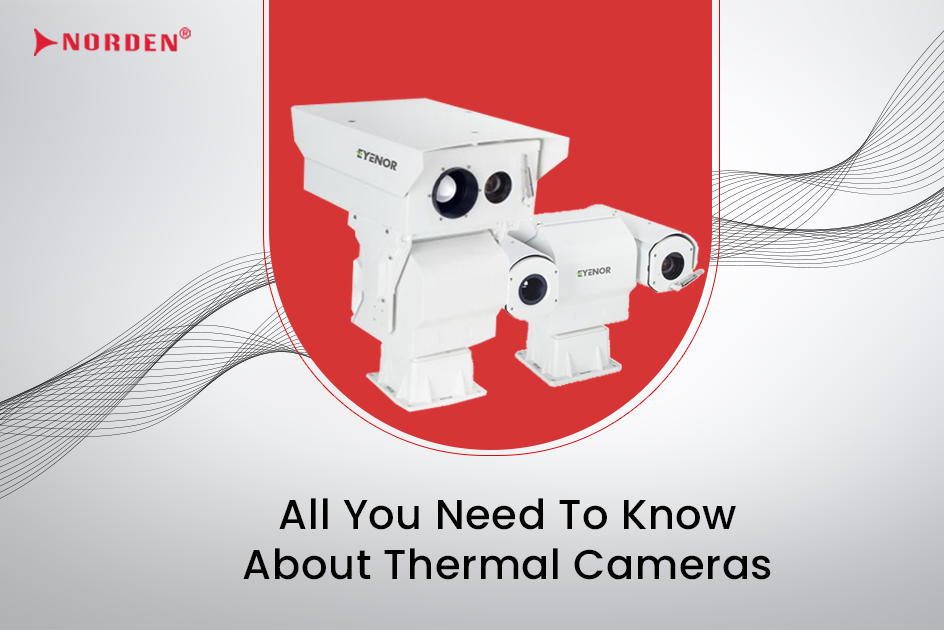
Thermal imaging cameras convert thermal energy (heat) into visible light to analyse a specific object or scene. The resulting image is known as a thermogram, and it is analysed using a technique known as thermography. Thermal imaging cameras are sophisticated devices that process and display the captured image on a screen. These images can be used for immediate diagnosis or run through specialised software for further evaluation, accuracy, and report generation. Thermal imaging cameras take temperature measurement to the next level; instead of a number, you get a picture of the temperature differences on a surface.
Today, the common standard for thermal cameras is to show warmer objects with a yellow-orange hue that brightens as the object heats up.Colder objects are displayed with a blue or purple colour.
The wavelength of infrared energy begins at about 700 nanometers and extends to about 1mm. Wavelengths shorter than this can be seen with the naked eye. Thermal imaging cameras generate thermal images by utilising infrared energy. The camera's lens directs infrared energy to a series of detectors, which produce a detailed pattern known as a thermogram. The thermogram is then converted to electrical signals, resulting in a visible and interpretable thermal image.
Thermal imaging cameras were first designed for military usage during the Korean War and have a variety of applications. Firefighters use them to see through smoke, locate individuals, and locate fire hotspots. The technology is used by law enforcement to handle surveillance, find and apprehend suspects, examine crime scenes, and execute search and rescue operations. It is also good to use them at Airports, solar panels, warehouses, pipelines, ocean affairs, etc. Power line maintenance specialists look for overheated joints and equipment to prevent future failures. When thermal insulation fails, building construction specialists can detect heat leaks and increase cooling or heating efficiency. Thermographic imaging can also help monitor physiological activity in humans and other warm-blooded animals, such as fever. They're also widespread among house inspectors' instruments.
Also Read: Advantages and disadvantages of Thermal Imaging Camera
Purchasing a thermal camera is not the same as purchasing a point-and-shoot or even a DSLR camera. It is critical to use a high-quality product to ensure that you detect and record accurate measurements. The resolution and clarity of the images provided by different types of thermal imagers differ significantly. It is critical that you purchase a camera with appropriate functionality. Here are a few crucial features and specifications to keep in mind:
More pixels on the IR imaging camera imply a greater detector resolution. A greater field of view is achieved with higher spatial resolution, whereas faster image processing and dynamic image rendering are achieved with lower spatial resolution. It comes with D1 image quality under 640*512, 400*300 and 256 *192 resolution. These Thermal Cameras are a genuine and comprehensive surveillance solution that meets a wide variety of surveillance needs. It is supported by a full range of optional lenses of 8/15/25/35/50/75/100mm.
There are a variety of focus methods available, including
A camera with interchangeable lenses gives the additional flexibility to evaluate a wide range of equipment and scenarios. Optional lenses for Nordan's Eyenor thermal cameras are available in the following focal lengths:
8mm, 15mm, 25mm, 35mm, and 50mm. It also includes motorised lenses with focal lengths of 75mm and 100mm.
Certain colour palettes might help bring out nuances that other hues might overlook. Black-Hot /White-Hot/Rainbow/Ironbow up to 17 modes are the colour palettes available for Eyenor thermal cameras.
Eyenor's high-performance thermal camera line includes an uncooled microbolometer detector with D1 image quality at 640*512 and 400*300 resolutions. These Thermal Cameras are a genuine and comprehensive surveillance solution that can be used to meet a wide range of surveillance requirements. It is compatible with a wide range of optional lenses, including 8/15/25/35/50/75/100mm.
Eyenor Thermal Cameras can also capture images in a variety of colour modes, including white-hot, black-hot, iron bow, and rainbow. They are also greatly assisted by features such as DVE, ONVIF compatibility, and temperature detection. They can monitor a wide range of objects and situations, including electricity generation, renewable energy equipment, the manufacturing industry, and building diagnostics.
Thermal cameras can see components and units that would be invisible to the naked eye. Thermal imaging is also highly safe because it is done at a distance. Faults, mistakes, failures, and anomalies in electrical, electronic, mechanical, and other industrial components and processes can be swiftly detected using thermal imaging.
When choosing a thermal imaging camera, you should consider a few parameters such as focus, resolution, lens, temperature range, colour palettes, and in-built tools for reflected temperatures and emissivity.